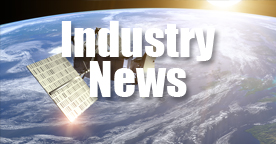post originally published on this site
NNSA Principal Deputy Administrator (PDA) Frank Rose hosted a visit by a delegation of Government of Finland senior officials at the NNSA national security laboratories: Lawrence Livermore National Laboratory, Sandia National Laboratory, and Los Alamos National Laboratory. The trip lasted from March 4-8 and sought to achieve three goals: 1) strengthening Finland’s Ministry of Foreign Affairs and Ministry of Defense officials’ understanding of U.S. strategic deterrence; 2) highlighting NNSA’s role in extended and integrated deterrence; and 3) informing the delegation about the close partnership between NNSA and the Department of Defense.
“Finland has a long history as a leader in nonproliferation issues and civilian nuclear power,” Rose noted. “But since joining NATO in last year, they are now part of an alliance that also relies on strategic deterrence. This visit provided a clearer picture of the National Labs’ role in delivering the U.S. strategic deterrent and the importance of science and technology in underpinning stockpile sustainment and modernization.”
“As a member of NATO, Finland participates fully in all its activities, including the Nuclear Planning Group. The Finnish government program also clearly states that we will expand our knowledge of matters concerning nuclear weapons. Our visit to these U.S. national laboratories was part of that learning process,” said H.E. Mikko Hautala, Finland’s Ambassador to the United States. “These visits provided very useful insights into other strategic aspects of nuclear issues that are increasingly important to international security.”
The trip began on March 4 at Lawrence Livermore National Laboratory (LLNL), where PDA Rose provided an overview of the NNSA and the broader Nuclear Security Enterprise. Brad Wallin, LLNL Deputy Director for Strategic Deterrence, followed with an overview of LLNL’s mission areas. The delegation toured the National Ignition Facility, the Advanced Manufacturing Laboratory, the Nuclear Forensics Laboratories, and the Nuclear Counting Facility. The delegation also received a briefing on international collaboration around science and technology, and participated in discussions on integrated deterrence and threat reduction.

